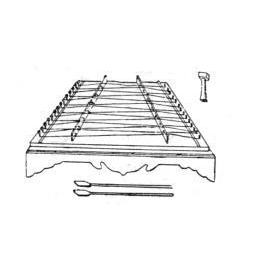How to play Chong
When playing the qiang, use a seated position. Place the zong on the qin stand or table, hold a qin bamboo in each hand and strike the strings on both sides of the qin horse to make sounds.

Clang's range G-a3, up to four octaves. Common techniques include vibrato, plucked strings, arpeggios, chords and octaves, etc. The vibrato is different from the mainland dulcimer.
Qiang can be used for solo, ensemble or accompaniment. It is good at playing robust, cheerful and enthusiastic melodies with a strong national style. Qiang is often combined with Uyghur folk instruments such as Tanbuer, Kalong, Satar and Dabu to perform the "Twelve Muqam" music. Common techniques include vibrato, plucked strings, arpeggios, chords and octaves, etc. The vibrato is different from the mainland dulcimer.
It is also the accompaniment instrument for singing and dancing in the vast urban and rural "Maxhrop". In the city's teahouses or restaurants, players also use it to play and sing. Today, Qiang has become one of the folk musical instruments that are popular among the Uyghur people. There are performance majors in Xinjiang art schools, cultivating performance talents for art groups.
 渝公网安备 50010702504639号
渝公网安备 50010702504639号